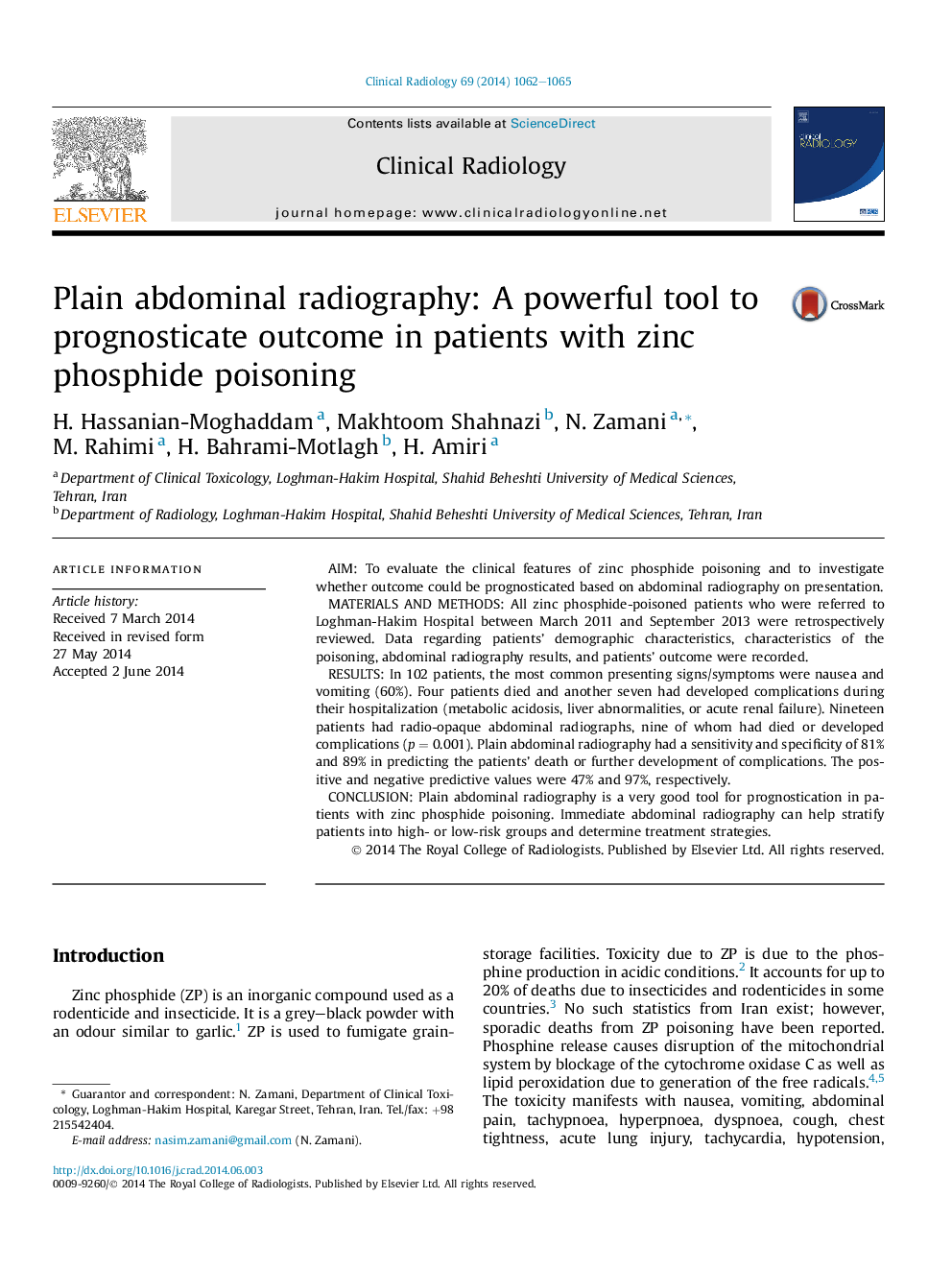| Article ID | Journal | Published Year | Pages | File Type |
|---|---|---|---|---|
| 3981775 | Clinical Radiology | 2014 | 4 Pages |
•ZP poisoning may cause severe symptoms or death although less frequent compared to ALP.•ZP-poisoned patients may deteriorate within the first 72 hours post-ingestion.•Abdominal radiography is a good tool to predict death/complications in these patients.
AimTo evaluate the clinical features of zinc phosphide poisoning and to investigate whether outcome could be prognosticated based on abdominal radiography on presentation.Materials and methodsAll zinc phosphide-poisoned patients who were referred to Loghman-Hakim Hospital between March 2011 and September 2013 were retrospectively reviewed. Data regarding patients' demographic characteristics, characteristics of the poisoning, abdominal radiography results, and patients' outcome were recorded.ResultsIn 102 patients, the most common presenting signs/symptoms were nausea and vomiting (60%). Four patients died and another seven had developed complications during their hospitalization (metabolic acidosis, liver abnormalities, or acute renal failure). Nineteen patients had radio-opaque abdominal radiographs, nine of whom had died or developed complications (p = 0.001). Plain abdominal radiography had a sensitivity and specificity of 81% and 89% in predicting the patients' death or further development of complications. The positive and negative predictive values were 47% and 97%, respectively.ConclusionPlain abdominal radiography is a very good tool for prognostication in patients with zinc phosphide poisoning. Immediate abdominal radiography can help stratify patients into high- or low-risk groups and determine treatment strategies.
